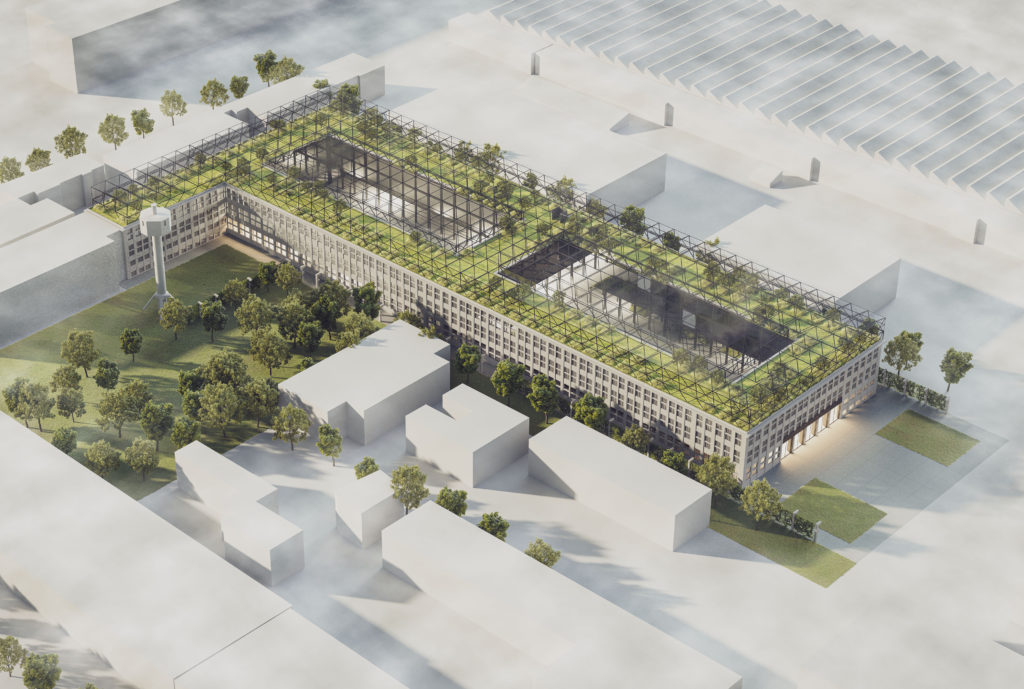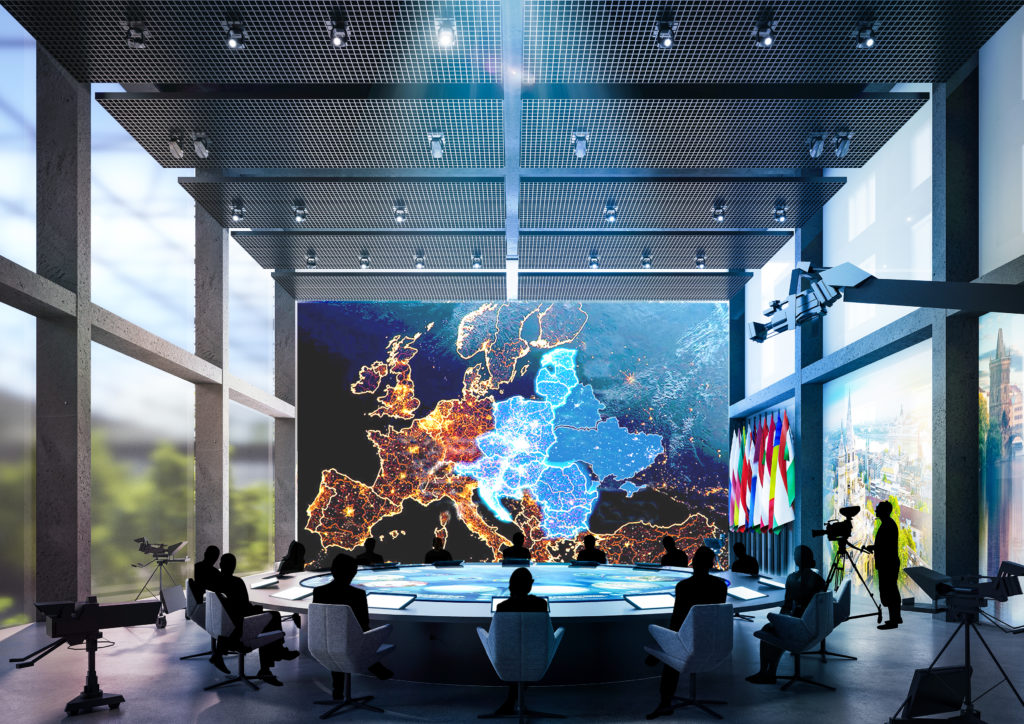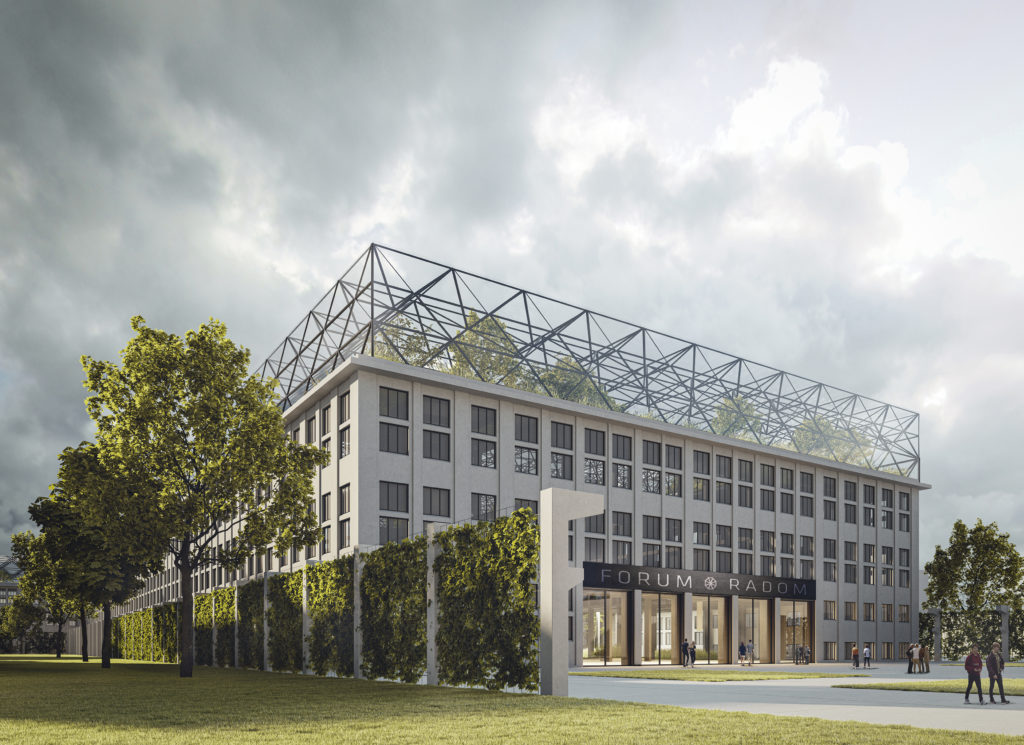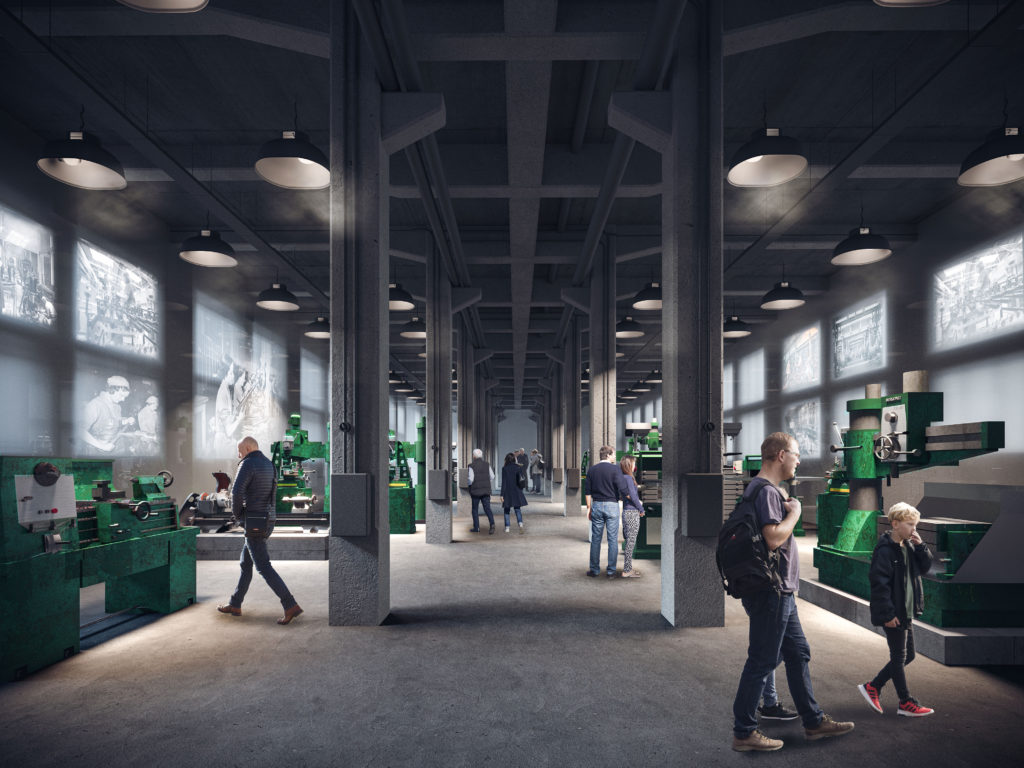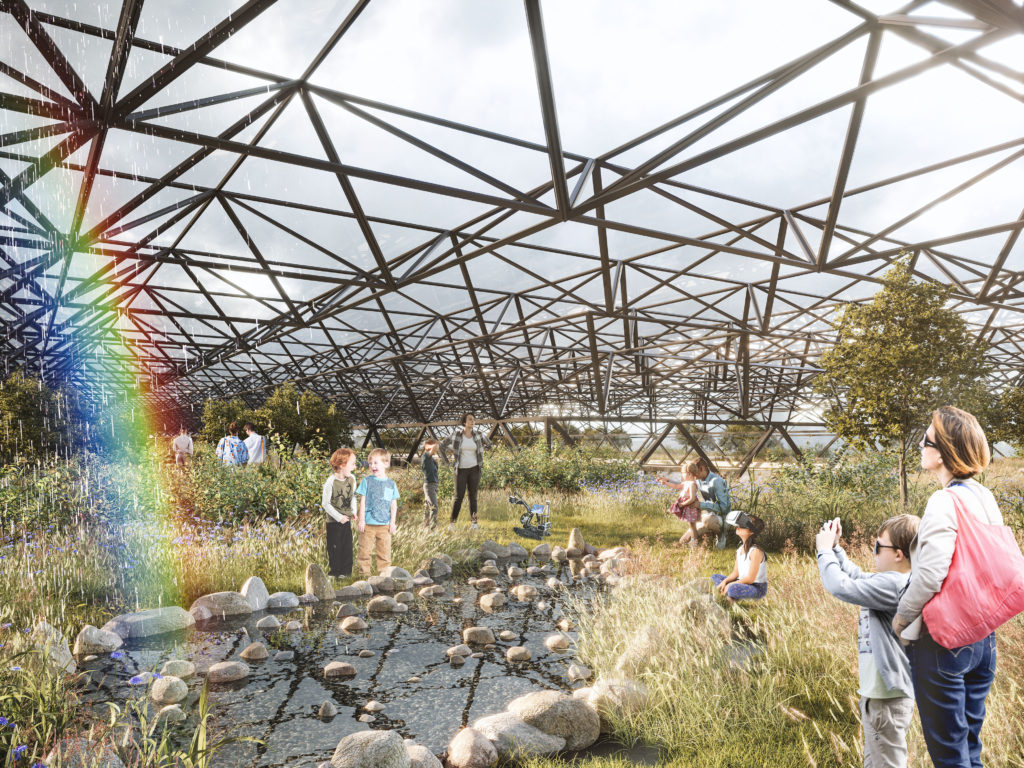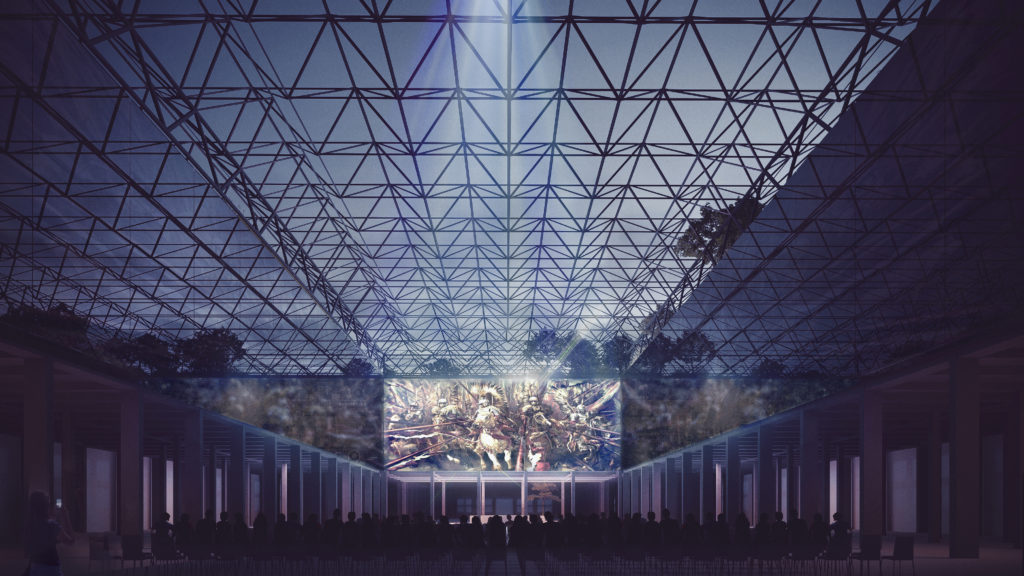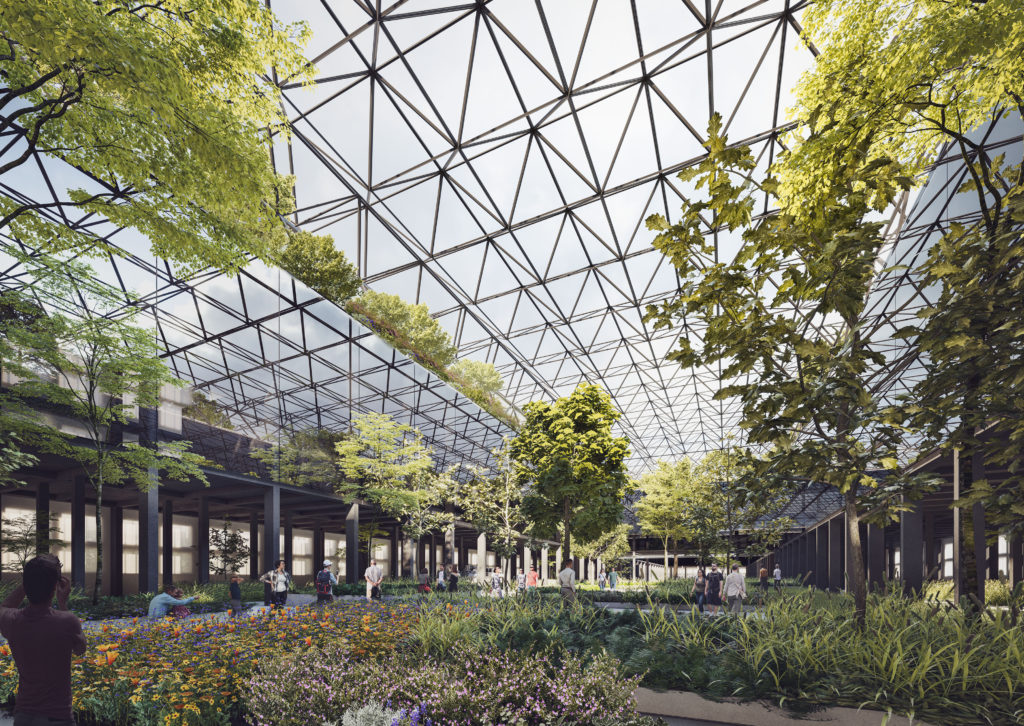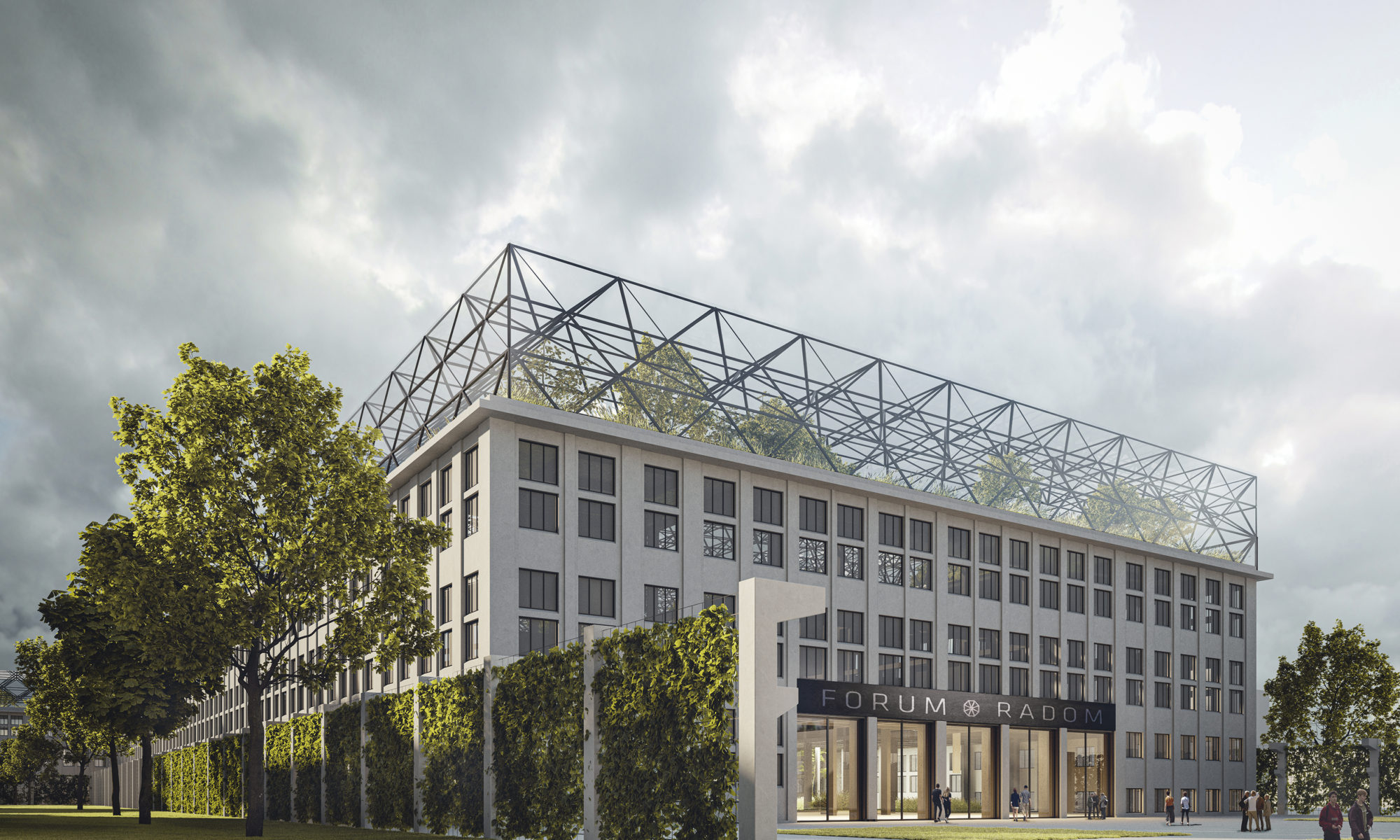
“ŁUCZNIK” WEAPON FACTORY
A conference and exhibition forum in place of a weapon factory. Nizio Design International studio’s idea for the revitalisation of the former “Łucznik”.
For almost the entire 20th century, Fabryka Broni “Łucznik” served as one of the town’s most important industrial plants and a key employer for Radom residents. The company ceased to operate in this location at the end of the century. Now the complex can come to life and bring new energy to the town.
“We want to combine the history of this important facility with a modern purpose. The revitalisation will not only invigorate and inject new life into the space but also, most importantly, create a place that responds to current and upcoming climate challenges. The project consciously opens up to the residents of Radom, making the building part of a broader strategy of urban relations, referring to concepts such as the scalable idea of smart city 3.0, the resilient city, the European Green Deal, or, finally, a social activation programme based on the real needs of the region. At the same time, it is a place open to supra-regional influences and inspirations, as well as to visitors from all over Europe,” says Mirosław Nizio, author of the project. “The solutions we have proposed are intended to save the unique character of the factory, to preserve elements covered with a noble patina that reminds us of the heritage of the building,” he adds. The concept for the revitalisation is to preserve the external façade of the factory, subjecting it to cleaning and restoration and leaving the building’s former window layout. The entire project is intended to be an example of a conscious approach to the challenging present and upcoming future (also on a macro scale) which should already be met with bold design gestures. It is worth noting that the concept is based on the results of a survey of the needs of the local community which indicated the importance of the revitalisation of the former Weapon Factory for Radom.
FORUM RADOM
The building will be covered by a glass roof supported by a steel space structure. It is planned to recreate a green garden and place solar panels on the construction. The adaptation of the previously unused spaces of two courtyards which will be covered with glass as well, is also a valuable element in the project. The interior glass façades of the atrium will create images made of the multiplied reflections of the walkers and the greenery filling the space.
The courtyards will become a meeting space and a venue for cultural events. Cafés and shops will open on the ground floor of the building, while the first floor will house conference, educational, and exhibition space. The green garden created on the roof will be based on the interdependence of the water cycle, the conscious shaping of fauna and flora, and their interconnection into micro-habitats. The building will enter into a spatial relationship with its surroundings not only within the designed premise but also as an important element on the map of entire Radom. The facility, realised with reference to the idea of urban mining (i.e. recovering valuable raw materials from used products), will be an element of recycling and upcycling chains. These are directions set not only in the immediate time horizon but also binding the building with the town space and the local environment for decades to come. In Forum, there will be a conscious combination of modern technologies in the field of digital space management, vernacular solutions to increase the efficiency of building ecology processes, or the preparation of the investment for resilience to crises and disasters (urban resilience). The facility will be surrounded by park greenery, playgrounds, and water reservoirs – similar to the former factory – linked into a wider programme of socio-educational and environmental impacts.
“Forum will not only be an important social meeting place for Radom residents The space is also to serve as an international conference centre,” says Mirosław Nizio, founder of Nizio Design International. “We designed it to host international summits and congresses, but also workshops and discussion panels. Conscious cooperation, undertaken already at the stage of strategy planning, whether with private entities, NGOs, or local and national administrations, aims to create a project with a strong impact on its surroundings, drawing on diversity, skilfully combining the needs of different social groups. In this way, the venue we are designing becomes not just another conference and exhibition forum, but also a centre for ecological innovation and, in particular, for urban initiatives where residents have a real impact on the process of shaping space by implementing elements of continuous creative participation. We imagine that there will be valuable educational activities with social, climate, and historical topics,” he says.
Housed in the building, the permanent exhibition will be devoted to the history of Central and Eastern Europe, and above all to the history of the nations that made up the Polish-Lithuanian Commonwealth and the states that lay within its orbit. The state-of-the-art exhibition will present the historical and contemporary links between the intellectual and cultural traditions of the Three Seas region. The building will also house a permanent exhibition presenting the history of the establishment from the inter-war period to the present day. This part of the exhibition will be located in a fragment of a fully preserved historic factory building. Exposure of the plant’s machinery elements will be a clear reminder of the facility’s former function.
